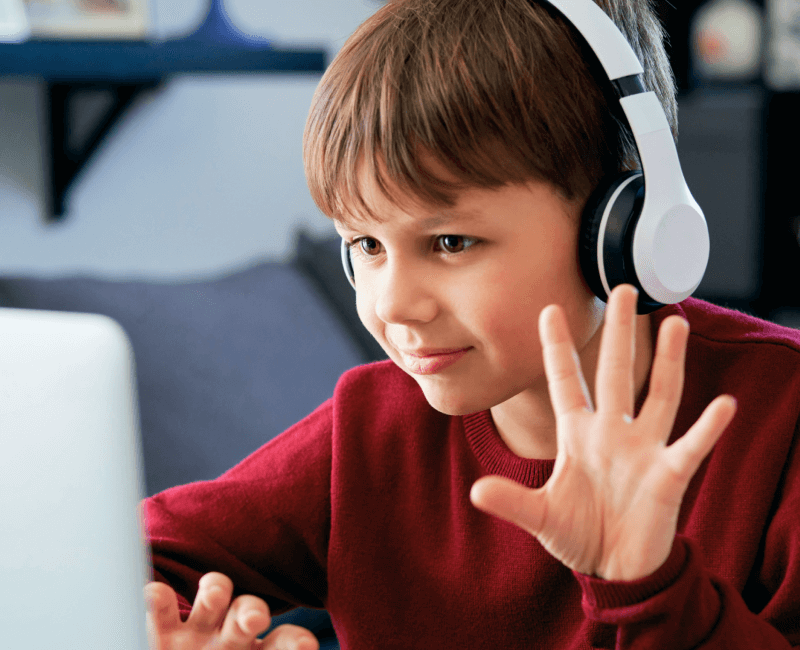What speech sounds should my child be using?
Children start to use different speech sounds in words at varying rates depending on the child, so one child may be using all the speech sounds needed in all word positions by the age of 4 and other children may be slightly later. So, when do we need to worry about a child’s speech sounds? When is it best to get an assessment with a Speech and Language Therapist? Does my child have a Speech Sound Disorder?
What is a speech sound disorder?
The term Speech sound disorder refers to a communication disorder in which children have persistent difficulty saying words or sounds correctly. To achieve ‘clear speech’ or accurate speech sound production requires:
- An internal knowledge of speech sounds (known as phonological awareness)
- The ability to coordinate the jaw, tongue, and lips with breathing and vocalizing in order to produce speech sounds.
Children with speech sound disorder may have difficulty in either of these areas or sometimes both.
When should children be using particular sounds?
In typically developing children, approximately half of speech should be intelligible by age 2 and most speech should be intelligible by age 4. There are many speech sound ‘processes’ that children make. Some of the common ones include:
Substitutions
These are the most common type of speech sound processes and it means that a child is substituting an incorrect sound for a correct one. For example:
Fronting
Stopping
Voicing
Omissions
This type of speech sound process means that children will miss out on one or more sounds of a word in their production. For example:
Final consonant deletion
Children can leave out sounds at the end of words so the word ‘cat’ will be said as ‘ca’ or ‘fish’ would be said as ‘fi’.(age 3)
Blend reduction
Syllable reduction
These are the more common, developmental processes that can be observed in most children, the ages in brackets show when these should be beginning to be resolved, however, there is a big variation between children.
Are there any other processes that are less common?
- Backing – This is the opposite of fronting in that the front sounds are made at the back of the mouth so ‘turtle’ would be said as ‘kurkle’ and ‘digger’ would be said as ‘gigger’
- Another, less common process that some children develop on some words is when they miss the first sound of a word, this is known as Initial Consonant Deletion. An example of this is if a child says the word ‘bus’ as ‘us’ or ‘mummy’ as ‘ummy’.
- If a child tends to make any substitutions or changes to vowels, this is also classed as a less common process. There are many examples of this but one is that the longer vowels can be shortened so the ‘ow’ sound may be said as ‘a’ so the word ‘cow’ may be said as ‘ca’.
These are merely examples of some of the speech sound processes that some children can have. There are many more speech sound substitutions and processes that may occur. They can also happen at the same time, sometimes in the same word and even on the same sound! A child may be fronting and stopping some sounds for example.
If I am worried, how would I get some help?
If you are worried about your child’s speech sound development, a Speech and Language Therapist should be referred to in order to assess and set targets for the child. There will be a state-funded NHS / LA Speech and Language Therapist in your area, this is always the first place to try and get support. Your local GP, Health Visitor, Nursery or School will have details on how to contact them and the referral process. Mable Therapy is able to offer assessment and therapy for children with Speech Sound Disorders, we have an experienced network of therapists which includes Specialists in this area.
Are there any other names for a Speech Sound Disorder?
You may not have heard of the term Speech Sound Disorder before, this is an umbrella term for a variety of diagnoses that may be given once a thorough assessment has been completed. Other diagnoses that fall under Speech Sound Disorders include:
Consistent Phonological Disorder
A child may have issues with listening for sounds and so mixes them up in their phonological system leading to speech sound errors. These errors are usually consistent across attempts at words and when saying the same sound in different words.
Inconsistent Phonological Disorder
A child may say the same word differently on different occasions and when asked to repeat the word. This can make the child quite unintelligible even to close family and friends.
Articulation Disorder
A child will have issues with articulating the sound or word that they are trying to say, this may be caused by a physical issue or difficulties sequencing the articulators to make sounds successfully.
Dyspraxia / Verbal Dyspraxia (also known as Developmental Co-ordination Disorder)
This diagnosis tends to be made after a number of sessions and may require further support and advice from other professionals such as a Paediatrician. A child with Verbal Dyspraxia may need ongoing Speech and Language Therapy as it often means long-term and severe difficulties coordinating and sequencing the speech apparatus to make sounds accurately and put them together to make words.
- General Speech & Language (24)
- Speech and Language Therapy (21)
- Social Communication (11)
- Speech Sounds (7)
- Autism Support (4)
- Language Delay/Disorder (3)
- SEMH (3)
- Safeguarding (3)
- AAC (2)
- Autism (2)
- Relationship Issues (2)
- ADHD Support (1)
- Absenteeism (1)
- Classroom Behaviour (1)
- Cleft Lip/Palate (1)
- Counselling (1)
- Funding (1)
- General mental health (1)
- Generalised anxiety (1)
- MATs (1)
- OCD (1)
- Phobias (1)
- Primary Schools (1)
- SENCOs (1)
- School Issues (1)
- Secondary & Sixth Form Schools (1)
- Stammering (1)
- Trauma (1)
You may also like
These related stories

Helping Your Autistic Child to Have Fun on Holiday!

Online speech and language therapy: 10 facts you need to know
